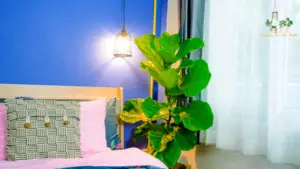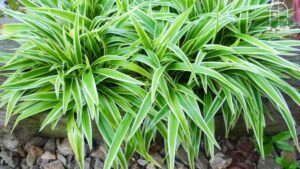This article covers the following areas –
- Tip 1: Consider Your Plant’s Light Requirements
- Tip 2: Choose the Right Pots and Planters
- Tip 3: Arrange the Plants Creatively
- Tip 4: Balance Plant Health and Aesthetics
- In Conclusion
Windows and plants are two entities that go hand-in-hand. The natural light that seeps through the windows offers a lifeline to the indoor plants, and in turn, these plants can significantly boost the aesthetics of your living space. Combining these two elements can offer an enchanting home decor solution, one that is not just visually appealing but also healthy. In this article, I’ll provide practical tips for decorating your windows with indoor plants.
Window decorating with indoor plants involves understanding plant light requirements, choosing appropriate pots, creatively arranging the plants, and maintaining plant health. This approach enhances aesthetics while ensuring plants thrive.
For more comprehensive tips and advice on each aspect of window decorating with indoor plants, continue reading. We delve into details about light requirements of different plants, tips for choosing and placing pots, creative arrangement ideas, and strategies to balance plant health with aesthetics.
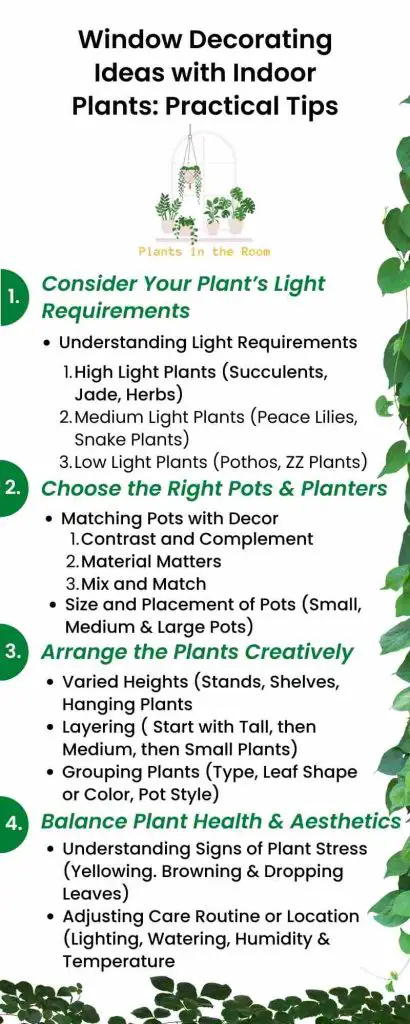
Tip 1: Consider Your Plant’s Light Requirements

One of the key considerations when decorating windows with indoor plants is the light requirement of each plant. Just as humans need different diets to thrive, plants also have unique light “diets.” Every plant species has an optimal amount of light it needs for growth. This is important because placing a plant in a window that does not provide the right light level may lead to poor growth or even the death of the plant.
For instance, imagine being made to live in extreme weather conditions that you are not accustomed to. You would probably find it tough to survive, right? The same applies to plants when they’re placed in unfavorable light conditions. Therefore, understanding the light needs of each plant is critical to successful window decoration with plants.
Understanding Light Requirements
Plants’ light requirements refer to the light intensity and duration needed for optimal growth. These requirements differ from plant to plant. Some plants need a lot of light, while others need less. As a general rule, plants native to sunny, open environments (like deserts or tropical grasslands) need more light than those native to forest understories.
Also, note that plants’ light requirements can change with the seasons. During shorter winter days, many indoor plants can tolerate lower light levels. In contrast, longer summer days often mean your indoor plants will crave more light.
#1 High Light Plants
High light plants are the sun-lovers. They need at least 6 hours of direct sunlight each day. These are often plants native to arid desert environments or sunny fields. They can be identified by their thick, fleshy leaves that store water, or their colorful flowers that soak up the sun. Examples of high light plants include:
- Succulents: These plants, including cacti, are used to the harsh sunlight of desert environments. They love basking in the sun on a south-facing window.
- Jade plants: This is another type of succulent that loves lots of sunlight and does well in west or south-facing windows.
- Herbs: Most culinary herbs, like basil and rosemary, need lots of sunlight to produce the oils that give them their signature flavor.
#2 Medium Light Plants
Medium light plants prefer bright, indirect light, although they can tolerate some direct sunlight. These plants are often native to environments where they receive filtered sunlight, like the edges of forests or other semi-open habitats. They may have broader, flatter leaves than high light plants. Some medium light plants include:
- Peace lilies: These plants love bright, indirect light. East or west-facing windows are usually best for them.
- Snake plants: Known for their tall, pointed leaves, snake plants can tolerate a range of light conditions but do best in medium light.
#3 Low Light Plants
Low light plants can thrive in minimal light conditions, making them perfect for north-facing windows or areas further from the window. These are often plants that are native to the understory of forests, where little light penetrates through the canopy above. These plants may have larger, darker leaves to help them absorb as much light as possible. Examples of low light plants include:
- Pothos: Known for its vining leaves, pothos can do well even in lower light conditions.
- ZZ plants: With their thick, waxy leaves, ZZ plants are sturdy and can survive in low light conditions.
Remember, these categories are general guides. Individual plants within each category can vary in light needs, so always research each plant type before placing it in your window.
Tip 2: Choose the Right Pots and Planters
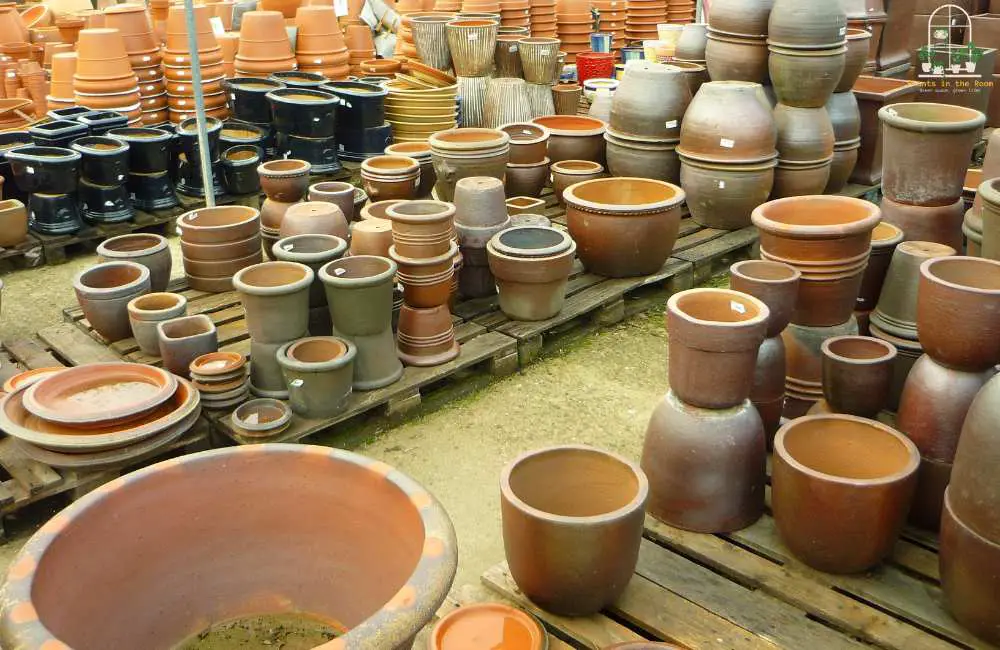
Once you understand the light requirements of the plants you intend to use, the next step is selecting the right pots and planters. This might seem like a trivial aspect of window decorating with indoor plants, but it is crucial to your plants’ overall aesthetic and health.
Choosing the right pot involves two key factors – the pot must be harmonious with your decor and cater to the needs of the plant it houses. It’s like finding a perfect home for your plant that ensures its growth and complements the interior design. So, let’s delve into how you can achieve this balance.
Matching Pots with Decor
When decorating, consistency is key. Your pots and planters should blend seamlessly with your home decor to ensure a flowing and cohesive look. This harmonious blending requires understanding color theory, interior design elements, and your style.
For instance, if your home decor leans towards minimalism with neutral colors, you might want to consider pots in whites, grays, or other subtle tones. On the other hand, if your style is eclectic or bohemian, colorful and uniquely shaped pots could be the perfect addition to your space.
Materials also play a big part. A concrete planter might look perfect in an industrial-style home, while a woven basket pot could complement a boho-chic decor.
Here are some more tips on matching pots with your decor:
- Contrast and Complement: Choose pot colors that complement or contrast your decor palette.
- Material Matters: The material of the pot can also enhance your decor. Ceramic pots lend a classic look, metal pots offer a modern, industrial vibe, while woven or wood planters can add a natural or rustic feel.
- Mix and Match: Don’t hesitate to mix and match different styles of pots. This can create a more dynamic and interesting look. But remember to maintain a balance to avoid a cluttered appearance.
Size and Placement of Pots
The size of the pots and planters you choose directly impacts the health of the plant and the aesthetics of your decor. Too small a pot, and the plant’s roots could become overcrowded, leading to stunted growth. Too large a pot, and the plant could face issues with water retention, as the excess soil in large pots tends to hold more water than the plant can use, leading to root rot.
Size also matters when it comes to placement. Large planters can accommodate big, statement plants and can be placed on the floor near large windows, making them focal points in the room. Smaller pots, on the other hand, are perfect for windowsills and can host petite plants.
Here’s a quick guide on choosing pot sizes:
- Small Pots: Ideal for small plants like succulents or herbs. They’re perfect for windowsills, shelves, or table tops.
- Medium Pots: These are great for medium-sized plants, like snake plants or peace lilies. They can be placed on plant stands or on the floor near windows.
- Large Pots: Large pots are suitable for big plants, like fiddle leaf figs or palms. These can be placed directly on the floor and often serve as statement pieces in a room.
The selection of pots and planters is not merely about aesthetics but also about catering to the needs of your plants. It’s about blending beauty and function, creating a decor element that is visually appealing and conducive to plant growth.
Tip 3: Arrange the Plants Creatively
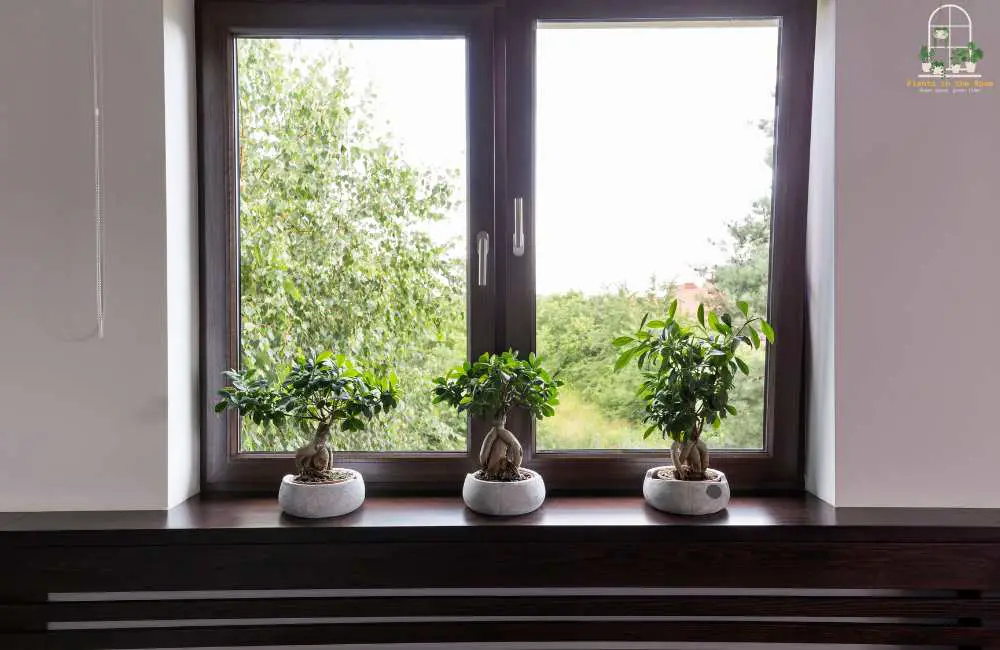
Understanding the light requirements of your plants and choosing the right pots and planters is crucial. But there is another aspect of decorating windows with indoor plants that can take your decor game to the next level – creative arrangement.
How you arrange your plants can dramatically enhance the visual appeal of your space. This involves strategies like varying the height of your plants, layering them, and grouping them based on specific characteristics. These strategies add depth and visual interest to your decor and ensure each plant gets the light it needs.
Varied Heights
In nature, plants grow at different heights. Some huddle close to the ground, while others reach up toward the sun. Mimicking this in your home can create a more natural, engaging look. You can achieve this by selecting plants of different heights or using plant stands or shelves to elevate some plants.
For example, you might place a tall snake plant on the floor near a window, a medium-sized peace lily on a stand, and a small succulent on the windowsill. This creates a “stair-step” effect that guides the viewer’s eye upwards and makes your display more engaging.
Here are some tips for varying plant height:
- Use Plant Stands: Plant stands are an easy way to raise your plants, and they come in a variety of styles to match any decor.
- Install Shelves: Installing shelves on or near your windows can offer more space for your plants and help you achieve a height variation.
- Hang Plants: Hanging plants from the ceiling or installing hanging baskets can add a new level to your display and free up window space for more plants.
Layering
Layering your plants is another creative strategy that can enhance your window decor. You create a layered effect by placing taller plants in the back and shorter ones in the front. This makes your arrangement visually interesting and ensures that all plants get their fair share of sunlight.
For example, you could place a tall fiddle leaf fig behind a medium-sized monstera, with small herbs or succulents in front. Each plant gets the light it needs, and you create a mini indoor jungle.
Here’s how to layer plants effectively:
- Start with Tall Plants: Begin your arrangement with your tallest plants in the back near the window. These can be floor plants or plants raised on stands.
- Add Medium Plants: Place your medium-sized plants in front of or beside your tall plants. These can be on stands, shelves, or on the windowsill.
- Finish with Small Plants: Complete your arrangement with your smallest plants in the front. These can be on the windowsill or in hanging planters.
Grouping Plants
Finally, grouping similar plants together can also have a visually pleasing impact. This could mean placing all your succulents together, grouping plants with similar leaf shapes, or those that share a color palette.
For example, a cluster of different types of succulents on a windowsill can create a mini desert landscape. Or, a group of plants with variegated leaves can create a striking display.
Here’s how to group plants effectively:
- By Plant Type: Grouping similar plant types, like all succulents or all ferns, can create a visually cohesive look.
- By Leaf Shape or Color: Grouping plants with similar leaf shapes or colors can create an interesting visual theme.
- By Pot Style: Grouping plants in similar pot styles, like all terracotta or ceramic pots, can enhance your decor style.
Arranging your plants creatively can transform your window from a simple light source into a dynamic, visually pleasing plant display. With these tips, you’re well on your way to creating a beautiful and healthy home for your indoor plants.
Tip 4: Balance Plant Health and Aesthetics
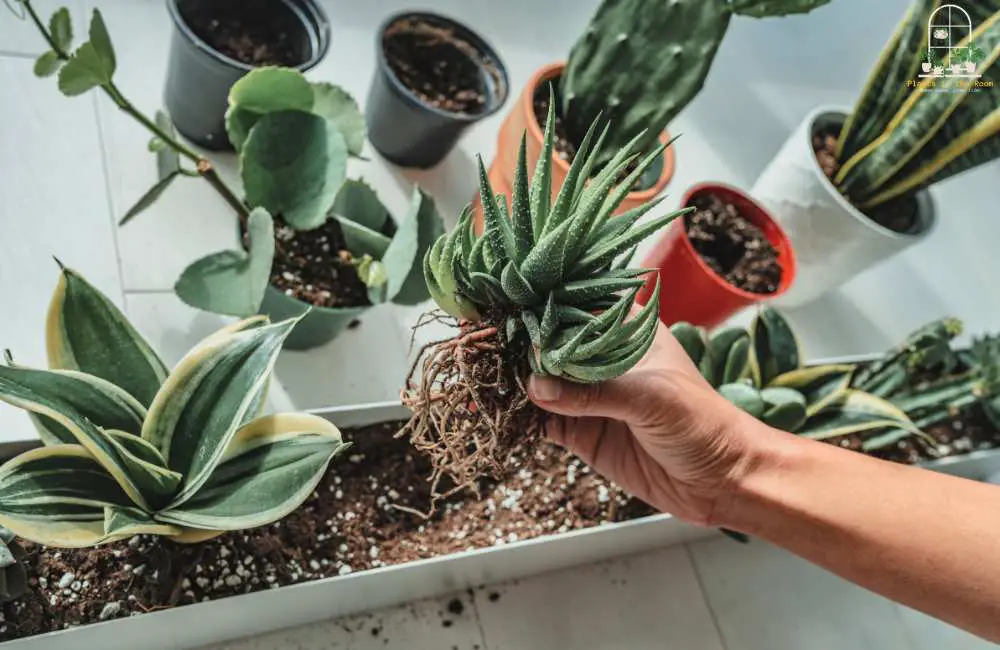
When decorating with indoor plants, it’s easy to get caught up in aesthetics, focusing mainly on how they enhance the visual appeal of your space. However, it’s crucial not to overlook the health of your plants in this process. After all, a thriving, vibrant plant adds much more to your decor than one that is struggling. Balancing plant health and aesthetics means understanding the signs of plant stress and knowing when your plants may need a change in location or care routine.
Understanding Signs of Plant Stress
Plants communicate their health status through subtle signs. If a plant isn’t thriving, it will show signs of stress. Common stress signals include wilting, yellowing or browning leaves, slowed or stunted growth, and dropping leaves.
For example, if your plant’s leaves turn yellow, it might be getting too much water or too little light. On the other hand, brown, crispy leaf edges might indicate too little humidity or overexposure to sunlight. Dropping leaves can be a sign of shock due to a sudden change in conditions or a symptom of overwatering.
Here are some common signs of plant stress and what they might mean:
- Yellowing Leaves: This could be a sign of overwatering, insufficient light, or a nutrient deficiency.
- Browning Leaves: Dry, crispy leaf edges can indicate low humidity or too much light. Soft, mushy brown spots could signify overwatering or disease.
- Dropping Leaves: This could be due to shock from a sudden change in conditions, overwatering, or in some plants, a natural response to low light conditions in winter.
Adjusting Care Routine or Location
If you observe signs of stress in your plant, it might be time to adjust its care routine or location. Maybe it needs more or less water, or it’s not getting the right amount of light in its current location. Sometimes, a simple change can make a big difference in your plant’s health.
Here are some tips for adjusting your plant care:
- Lighting: If your plant shows signs of light stress (like yellowing leaves or elongated, sparse growth), try moving it to a brighter or shadier spot, as needed.
- Watering: You might be overwatering if the plant’s leaves are yellowing or falling off. On the other hand, if the leaves are wilting or browning, the plant might need more water.
- Humidity and Temperature: Some plants need high humidity or specific temperatures to thrive. If your plant has brown leaf tips or seems to be struggling, try adjusting the humidity or temperature or move the plant to a more suitable location.
Remember, the goal is to create a beautiful window display and provide a healthy environment for your plants to grow and thrive. Paying attention to their needs and responding appropriately ensures your plants remain as beautiful and vibrant as the day you brought them home.
In Conclusion
Decorating your windows with indoor plants can elevate your home decor to new levels, infusing your space with vitality and natural beauty. With the right understanding of the plant’s needs and a dash of creativity, you can transform your windows into captivating displays.
Remember, the key is to balance aesthetics with the health of your plants, ensuring they thrive as they add charm to your interiors. Whether you are a seasoned plant lover or a newbie, these practical tips will help you create a vibrant, green space you’ll love.




